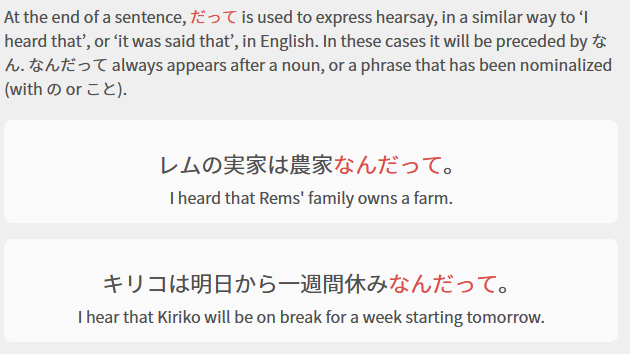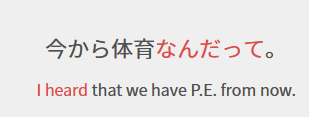Just giving a bit of feedback / a suggestion now that I’m going back through some N3 stuff 
So there’s these two grammar points: だって and んだって. But んだって (which is used for hearsay) is covered in the だって explanation, and だって includes some of those んだって hearsay sentences.
んだって explanation on だって page:

Example of an SRS sentence from だって page that has to do with hearsay:

Since んだって already is its own grammar point in Bunpro, wouldn’t it make more sense for だって to not include that info and instead focus on the だって that appears at the beginning of sentences/after nouns? Maybe have a quick explanation in a Caution section, but not have sentences in the SRS for it.
I think otherwise there’s just too much information on the だって grammar point, especially since we already have a separate grammar point for using だって for hearsay. Or maybe I’m the only one who thinks this?

 .
. . Initially when writing the explanation for だって, we decided that it was the most general, so covering most of the meanings would be beneficial (なんで~だって、だって~もの、んだって、Noun + だって).
. Initially when writing the explanation for だって, we decided that it was the most general, so covering most of the meanings would be beneficial (なんで~だって、だって~もの、んだって、Noun + だって).